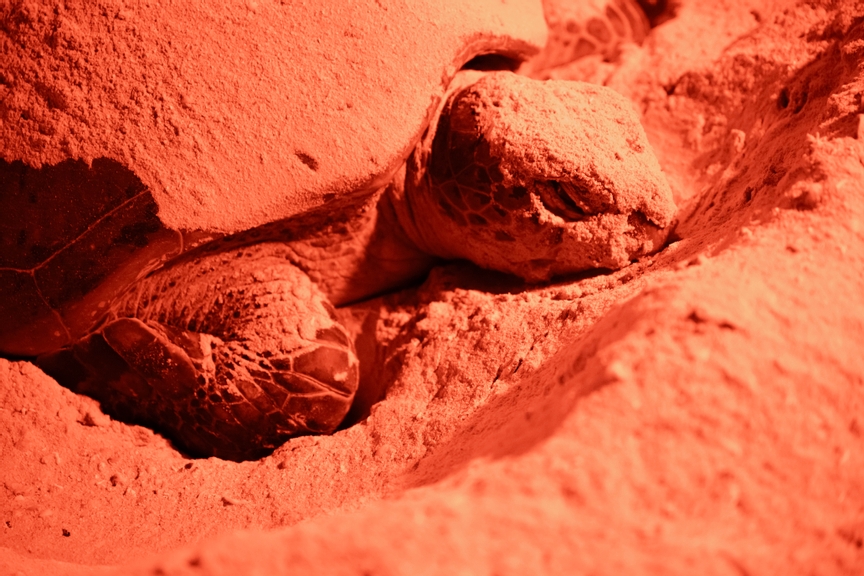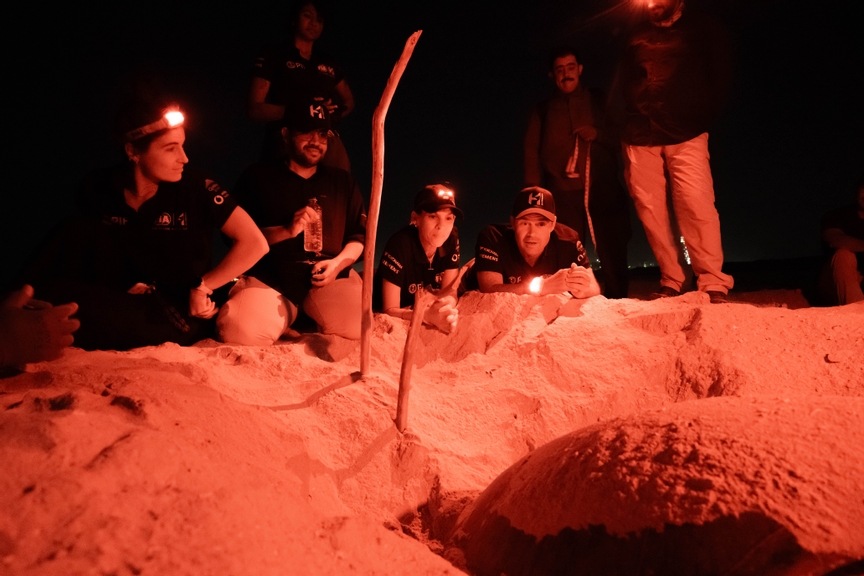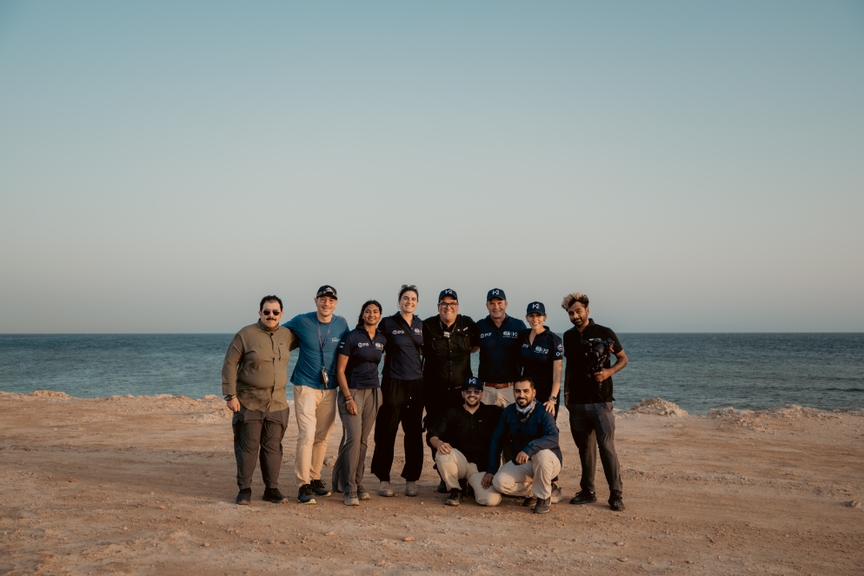Extreme H and KAUST Celebrate Turtle Conservation Efforts

Saudi Arabia, 14 October, 2025: Extreme E is continuing its legacy by protecting endangered sea turtles on Saudi Arabia’s Red Sea coast.
Through its Legacy Programme, the championship supports a Turtle Conservation Initiative from King Abdullah University of Science and Technology (Beacon Development Department). Ras Baridi Turtle Conservation Initiative, a collaboration that has been running since the first race in 2021, remains Extreme H’s longest-standing Legacy Programme. The project is based at Ras Baridi beach, 50 kilometres north of Yanbu, home to one of the most significant nesting beaches in the Red Sea and entire Indian Ocean region.
During the Extreme E Final Lap, senior team members visited Ras Baridi Conservation Initiative at the established visitor centre to meet researchers and wardens. Extreme E’s support to the initiative has enabled the collection of critical data, flipper tagging turtles to identify them in future seasons, and observe hatchlings that safe passage into the ocean, where their fate is then in nature's hands. The full moon and high tide created the perfect natural conditions to observe the behaviours.
Dr Hector Barrios-Garrido, Senior Marine Megafauna Specialist at KAUST, said: “It was an honour to receive our sponsors Extreme E and have the opportunity to update and showcase the progress and achievements of this conservation initiative. We’re deeply grateful for the continued partnership, which helps make this pioneer conservation initiative work a reality and an example for other programs at national level.”

Explaining the importance of the conservation work, Hector says: “Sea turtles are bioindicators who play a critical role in the oceans, maintaining coral reefs, and sea grass beds which store blue carbon, and provide shelter and food for countless marine creatures, thus supporting the balance of the whole ocean ecosystem. If turtle numbers thrive, it indicates low pollution levels and healthy waters. As key species, by protecting turtles we are also safeguarding hundreds of other species and the delicate balance of the entire marine ecosystem.
“The Green and Hawksbill turtles along Saudi Arabia’s Red Sea coast are facing growing threats from the changing climate and human activity. Rising sand temperatures can lower the survival of turtle eggs and, in some cases, producing almost exclusively female hatchlings, a worrying sign for the long-term sustainability of turtle populations.
“At the same time, coastal erosion caused by rising sea levels has made many nesting beaches unstable and unsafe. In places like Ras Baridi, steep sand cliffs prevent adult turtles from reaching some higher grounds to lay their eggs, while others have tragically fallen while trying to return to the sea. Thanks to our presence and daily patrols, 14 turtles have been rescued after falling from these cliffs, turtles that would likely have died without timely intervention. Considering that each female lays in average five nests per season, with roughly 80 eggs per nest, saving just one adult female means saving hundreds of potential hatchlings. These efforts show how vital on-site protection is while we work toward future long-term solutions to mitigate coastal erosion and safeguard the future of these remarkable animals.”
In response, KAUST Beacon Development Turtle Conservation Project is promoting the effective management of local green turtle populations through continuous monitoring of breeding activity and reproductive success. Local wardens, who have been hired and trained as a direct result of funding, and marine scientists work together to collect data, monitor nesting activity, remove plastic debris from the beach and put conservation strategies into action. A visitor and education centre has been created, offering educational talks to local coastguards and stakeholders, and awareness campaigns to reduce off-road driving and other human impacts on nesting beaches. By combining research, restoration, and education, the project is giving sea turtles, and the ecosystems they represent, a stronger chance of survival.

Over five years of conservation at Ras Baridi, KBD team has recorded 854 turtle nesting events. A total of 722 turtles have been flipper tagged, and our wardens have rescued 3,156 disoriented hatchlings that have safely reached the sea. Alongside this, 857 kg of marine debris (mainly plastic) were removed from the nesting beaches. These results highlight how dedicated wardens’ presence can make a positive measurable impact for marine turtles and their fragile habitats along the Red Sea coast.
Extreme E’s Managing Director Ali Russell added: “The Ras Baridi project perfectly reflects what our Legacy Programme is all about; building long-term partnerships that make a measurable impact. Sport has the power to inspire and drive change, and through Extreme E, we’re proud to use our platform to help protect nature and accelerate solutions. “It was amazing to visit the project, learn more about the importance of sea turtles and get to meet those who dedicate their lives to supporting these incredible creatures. It was a special experience for all of us to see the site, and get to witness, not only the green turtles make their way onto the beach at night to lay their eggs, but also we were very lucky to see baby turtle hatchlings, climb out of their nests and pass their first obstacle along the beach, and make their way into the ocean to hopefully start their lives.
“We congratulate and thank Hector, Abdulrazaq, Davide, and their dedicated team of wardens Ali and Mamdoh for the important work they do, which we look forward to supporting further.”
The initiative began under Extreme E, with Founder and CEO Alejandro Agag identifying the project as one of the first environmental priorities for the series alongside Scientific Committee member Professor Carlos Duarte.
As each dawn breaks over Ras Baridi and fresh turtle tracks trace the shoreline, the connection between the race for survival in nature and motorsport’s drive for progress becomes clear. What began as a commitment to leave a positive mark beyond the racetrack has evolved into a pioneer and lasting legacy, one where research, and environmental action move forward side by side.